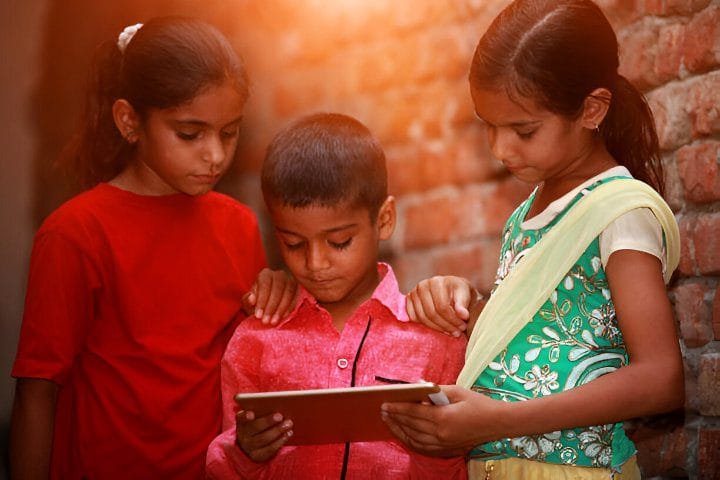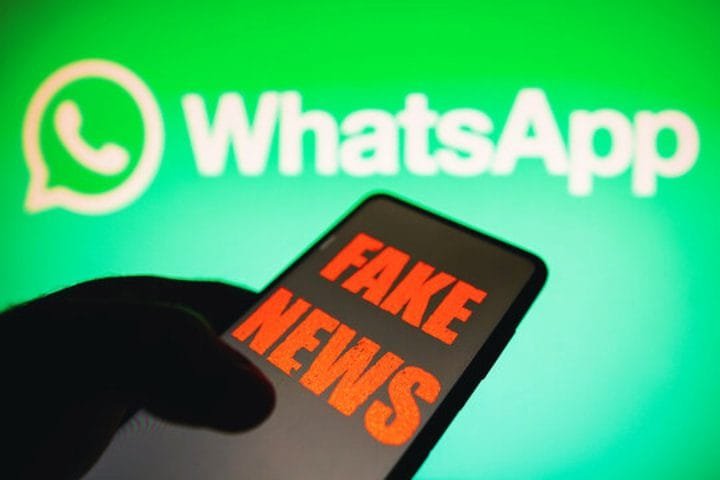Media Literacy: Introduction
Digital technologies are making media awareness increasingly important. Media literacy, information literacy, and digital literacy represent the three most prominent concepts that emphasize a critical perspective on media messages.
In today’s world, information is accessible in vast quantities and diverse forms. Alongside its abundance, it can be accessed through various forms, yet its quality remains ambiguous.
The virtual world that generates this information is not separate; it invades the ‘real’ world. Nevertheless, technology serves merely as a tool, and it does not dictate our actions. We must gain insight and take significant steps by utilizing various forms of literacy.

The frequency of media consumption is remarkably elevated, leading to a pervasive sense of media saturation within society. The media profoundly shapes how we perceive the world, influencing our beliefs and attitudes in significant ways. The importance of visual communication and information is increasing.
The effective use of information in society and the need for lifelong learning are increasingly important. Media consumption is evolving due to user-generated content and the accessibility of digital products.
Media literacy is an interdisciplinary field that incorporates sociology, psychology, political theory, gender and race studies, cultural studies, art, and aesthetics. The issues of how people understand, interpret, critically analyze, and create texts become research subjects in the different fields.
Importance and Definitions
The quantity of media exposure does not alone justify the importance of media literacy. The essential importance of information in fostering democracy, encouraging cultural participation, and promoting active citizenship further validates this point.
It is important to recognize that children and youth, influenced by entertainment and popular culture, are subjected to a significant amount of media messages as a form of socialization. Young people increasingly dedicate their time to engaging with various forms of entertainment media, such as television, the internet, popular music, movies, and video games.
Taking into consideration the above situation and other factors, the European Commission (2007) adopted a view of media literacy as the ability to access the media, to understand and critically evaluate different aspects of the media and media content, and to create communications in a variety of contexts.

The document from the European Commission highlights the significance of media literacy in the context of commercial communication. Advertising is an integral part of daily life; therefore, it is essential to educate all audiences about the significance of commercial communication, among other functions, equipping young audiences with the tools to cultivate a critical perspective on commercial messaging. This aspect stands out as a unique characteristic of media literacy that is not present in other disciplines.
Media literacy is an umbrella concept. It is characterized by a diversity of perspectives and a multitude of definitions.
Patricia Aufderheide, Professor at American University in Washington, D.C., defined media literacy as:
A media literate person—and everyone should have the opportunity to become one—can decode, evaluate, analzse and produce both print and electronic media. The fundamental objective of media literacy is a critical autonomy relationship to all media. Emphases in media literacy training range widely, including informed citizenship, aesthetic appreciation and expression, social advocacy, self-esteem, and consumer competence.
- Media are constructed and construct reality
- Media have commercial implications
- Media have ideological and political implications
- Form and content are interconnected in every medium, each possessing its own aesthetic, codes, and conventions.
- Receivers interpret meaning in media.
The Ontario Association for Media Literacy provided another important definition of media literacy:
The goal of media literacy is to cultivate an informed and critical understanding of the nature of the mass media, their methods, and their effects. It is education that aims to increase students’ understanding and enjoyment of how the media work, how they produce meaning, how they are organized, and how they construct reality. Media literacy also aims to provide students with the ability to create media products.
Media Literacy, Information Literacy, Digital Literacy

In addition to media literacy, two other literacies are prominently featured in the communication literature concerning these topics: information literacy and digital literacy.
The definition of information literacy by the American Library Association says that “information literate people are able to recognize when information is needed. They are also able to identify, locate, evaluate, and use information to solve a particular problem.”
In a book, Digital Literacies for Learning (2006), edited by Allan Martin and Dan Madigan, the definition of digital literacy emphasizes both its wide meaning and the role of media:
Digital literacy is the awareness, attitude, and ability of individuals to appropriately use digital tools and facilities to identify, access, manage, integrate, evaluate, analyze and synthesize digital resources, construct new knowledge, create media expressions, and communicate with others in the context of specific life situations in order to enable constructive social action and to reflect upon this process.
Core Components of Media Literacy
Access
- Ability to find and utilize media platforms
- Knowledge of media distribution channels
- Skill in navigating different media formats
This component emphasizes the key skill of accessing media platforms and the technical knowledge required for effective use. This involves learning to use different devices, platforms, and interfaces, as well as understanding how media content is shared across various channels, including traditional broadcast networks, streaming services, and social media.
Analysis
- Analyzing media messages
- Understanding of media ownership patterns
- Understanding content creation methods
- Identification of target audiences
This component explores the ability to analyze media messages, understand ownership structures affecting content, recognize techniques in production, and identify how messages are tailored for specific audiences.
Evaluation
- Evaluation of source reliability
- Methods for fact-checking
- Knowledge of bias and propaganda
- Identification of business objectives
The ‘Evaluation’ component enhances analytical skills by focusing on assessing source credibility through systematic fact-checking, identifying different types of bias and propaganda techniques, and understanding the commercial motivations behind media content creation.
Creation
- Skills for producing content
- Knowledge of media formats and platforms
- Considerations for ethics in content creation
- Digital storytelling capabilities
The ‘Creation’ component focuses on moving from consumption to production. It highlights the need for practical skills in content creation while also stressing the importance of ethical standards and the nuances of various media formats and platforms. This involves mastering digital storytelling techniques that engage audiences and convey meaningful messages.
Action
- Responsible sharing practices
- Civic engagement through media
- Digital citizenship
- Managing online safety and privacy
The ‘Action’ component embodies media literacy, where individuals engage with media responsibly, participate in civic discourse across channels, embrace digital citizenship, and uphold online safety and privacy practices.
These five components create a framework that helps individuals become critical consumers and responsible creators of media content in a digital world.
Media Literacy Case Study: India

Context
- Large, diverse media market
- Rapid digital adoption
- Multilingual content ecosystem
India’s media literacy landscape is a complex case study, with a vast and diverse media market that serves over 1.4 billion people across 28 states and 8 union territories, with more than 22 official languages and numerous dialects.
The country has experienced significant digital transformation in recent years, especially following the launch of affordable 4G services by Jio in 2016, which initiated a digital revolution and positioned India as the world’s second-largest internet user base.
Key Challenges
Digital Access Disparities
- Urban-rural divide
- Language barriers
- Gender gap in digital access
This rapid digital adoption has created significant challenges, mainly related to disparities in digital access. The urban-rural divide is significant, as cities benefit from high-speed internet and advanced digital infrastructure, while many rural areas face challenges with basic connectivity.
Language barriers make this divide even more difficult because most internet content is still primarily in English, despite the fact that only about 10% of Indians are fluent in it. A significant gender gap in digital access remains, as cultural, social, and economic factors often restrict women’s access to digital devices and internet services.
Misinformation Spread

- WhatsApp-driven fake news
- Religious and communal tensions
- Health misinformation
The challenge of misinformation has emerged as another critical concern, with WhatsApp, India’s most popular messaging platform with over 400 million users, becoming a primary channel for spreading fake news.
False rumors have caused serious consequences, such as instances of mob violence. Misinformation campaigns often worsen religious and communal tensions, with health misinformation becoming especially problematic during the COVID-19 pandemic.
Initiatives
- Digital Saksharta Abhiyan (Digital Literacy Mission)
- Fact-checking initiatives in multiple languages
- Government’s digital literacy programs
The government has implemented digital literacy programs through the National Digital Literacy Mission (NDLM) and Pradhan Mantri Gramin Digital Saksharta Abhiyan (PMGDISHA), focusing on basic digital skills and safe internet practices for various demographic groups.
Additionally, numerous fact-checking organizations have emerged, operating in multiple Indian languages to address misinformation.
Contemporary Challenges in Media Literacy
Current challenges in media literacy are a complex set of interconnected issues that are increasingly important in our digital age.
Digital Misinformation
- Deep fakes and manipulated content
- Viral hoaxes and conspiracy theories
- Echo chambers and filter bubbles
- Algorithm-driven content curation
Digital misinformation is a significant challenge, especially with deep fakes. These are created using artificial intelligence to produce convincing but false videos and images, making it harder for users to tell authentic content from manipulated ones.
This technology, along with social media’s viral nature, has caused hoaxes and conspiracy theories to spread rapidly, often reaching millions before fact-checkers can act.
Echo chambers and filter bubbles occur when social media algorithms create isolated information environments that reinforce existing beliefs and exclude opposing viewpoints, complicating the situation.
These algorithm-driven content curation systems, while designed to enhance user engagement, often prioritize sensational content over factual information.
Data Privacy
- Digital footprints
- Personal information security
- Corporate data collection
- Surveillance concerns
Data privacy is a significant concern as individuals’ digital footprints, created by online activities, are at risk of exploitation. Personal information security is complex as users interact with various platforms and services that collect large amounts of personal data.
Companies have become more advanced in collecting data, often harvesting and monetizing user information in ways that many users do not fully understand or agree to. This raises serious surveillance concerns from both corporations and government agencies, prompting questions about privacy rights in the digital age.
Digital Divide
- Access inequalities
- Skills gap
- Technological barriers
- Economic disparities
The digital divide continues to be a significant issue, appearing in various forms of access disparities. Inequalities involve not just internet access but also the quality of that access, the devices used, and the speed of connectivity.
A notable skills gap exists among various demographic groups, especially regarding age, education, and socioeconomic status, impacting their capacity to effectively use digital technologies. Technological barriers, such as the fast pace of change and the complexity of new tools, can cause many users to struggle to keep up.
Economic disparities significantly contribute to these challenges, as access to quality devices, reliable internet, and digital literacy education often relies on financial resources.
Media literacy in the digital age requires a comprehensive understanding of traditional and emerging media forms, critical thinking skills, and practical abilities. The diverse challenges demonstrate the need for contextualized solutions while highlighting universal principles of media literacy education.




